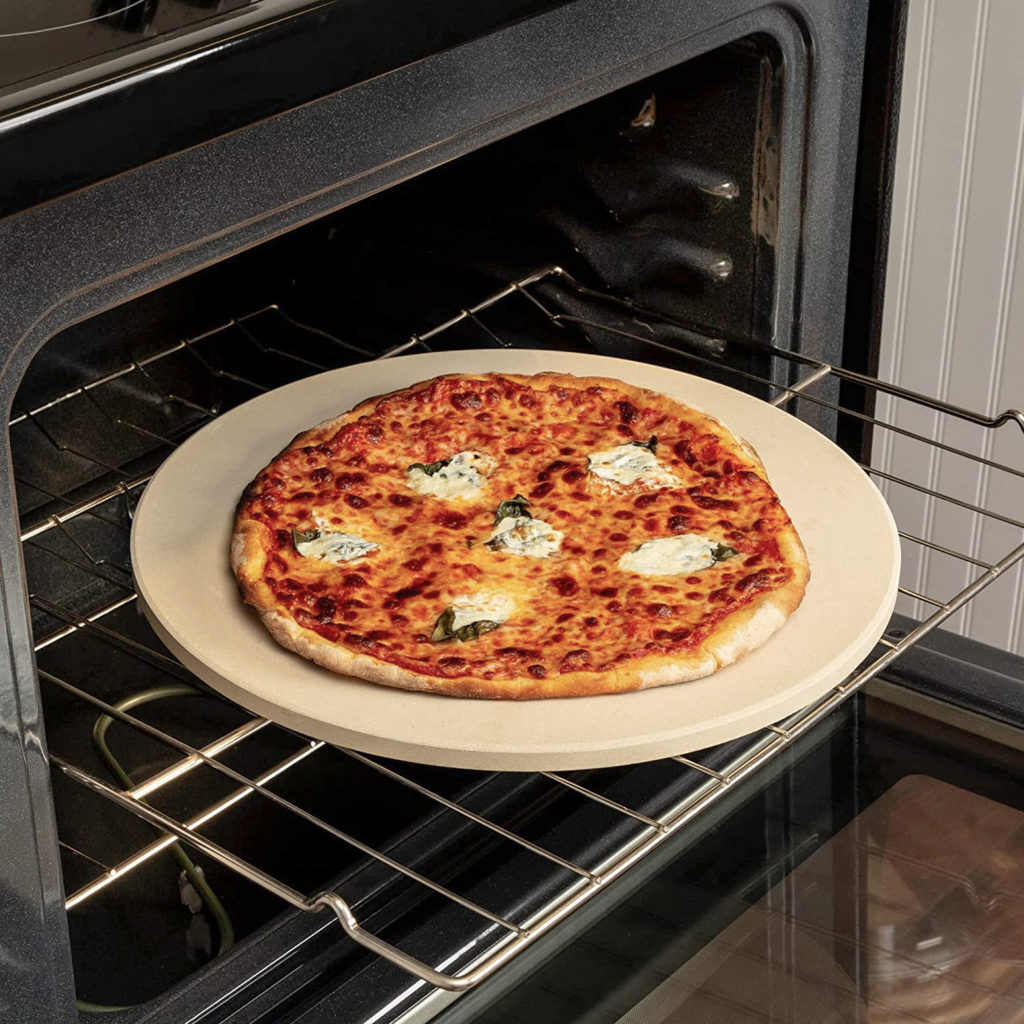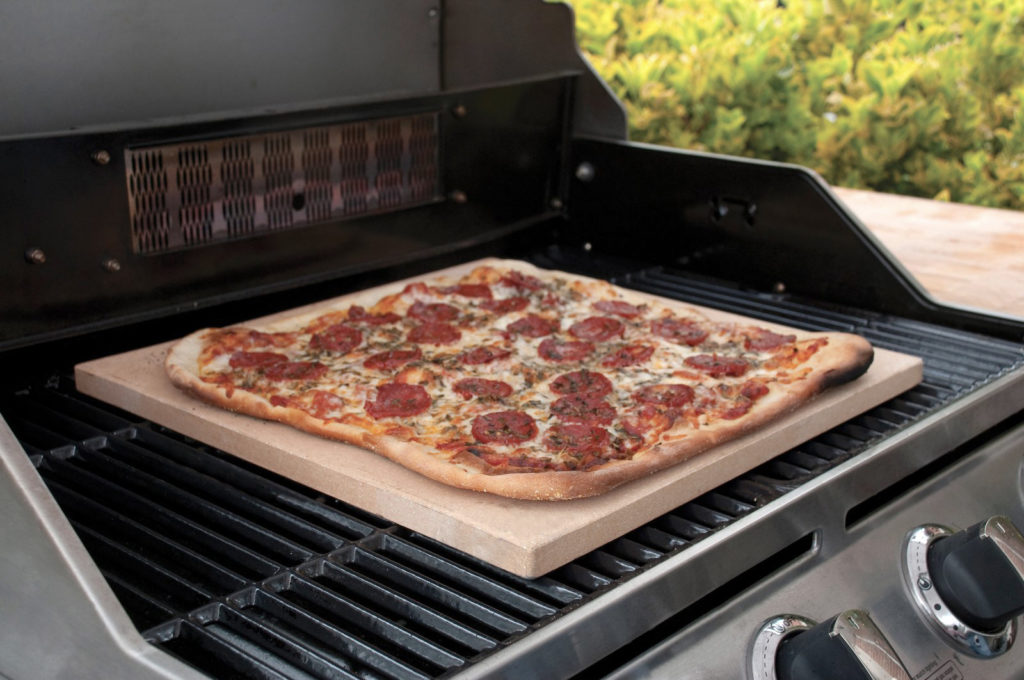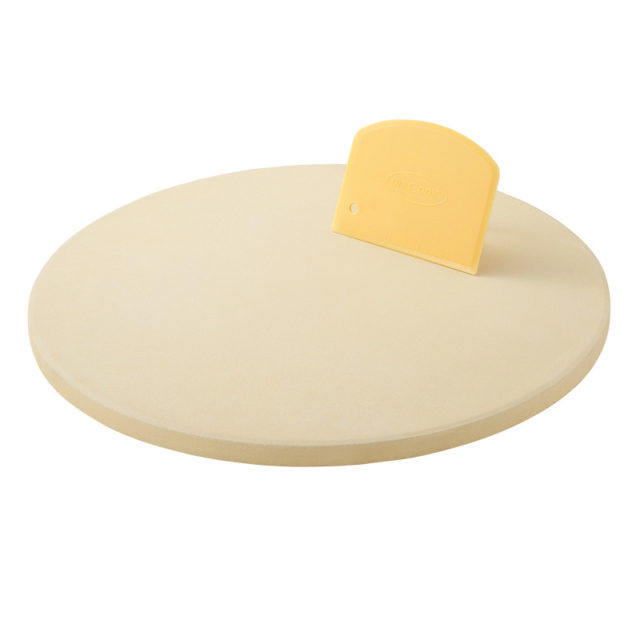
Why a Pizza Stone will make your homemade pizza better
Pizza ovens can reach temperatures of up to 900 degrees Fahrenheit (480+ Celsius). This is key to create the perfect pizza crust.
Now, most of us don’t have access to a pizza oven. And even though you probably don’t know the max temperature of your home oven from the top of your head, let me tell it will probably maxes at 405 ºF, or even lower. That means your domestic oven However, will, at best, reach a maximum temperature that’s half of what a professional pizza oven produces.
With that in mind, it shouldn’t come as a surprise to learn that it is very hard to cook a restaurant-like pizza at home. That doesn’t mean your homemade pizza is bad, it will just be different, because it will have been cooked differently.
That being said, there is a very simple tool that can help us achieve better results. That is the Pizza Stone, or Oven Stone. In this article we are going to look at how this simple gadget can help you take your homemade pizza to the next level, and also learn a couple tricks about how to use it.
How does it work and why does it make better pizza?
Using a pizza stone is really simple. The only thing you need to do is put the stone in the oven beforehand and preheat it for about 30 minutes. Then put your pie on the stone and back into the oven. That’s it!
The reason why a pizza stone will help you achieve a more professional pizza using your home oven is because after preheating the stone, it will transfer this heat directly to your pie. The more heat you can concentrate on you pizza the quicker it will cook and the closer it will be to the one you’ll expect to get at a restaurant.
But that’s not the only reason. When we cook pizza in our home oven, we often do so on a metal pan or tray, which isn’t permeable and does not allow for the moist in the dough to dissipate. This is the main reason why the dough of our homemade pizza usually ends up being a bit soggy.
The pizza stone on the other hand is porous. This porous will capture part of that excess moisture in your dough, making it drying and crispier.
What is the Pizza Stone made off?
Originally, Pizza Stones were, as the name suggests, made of stone. Slate stones or other kind of flat stone would be use as the cooking surface of wood ovens in Italy.
As you can imagine, domestic pizza stones are not made of stone these days. The material they are made of can vary, some are ceramic, but the best ones are usually made of cordierite or a similar material. That’s because cordierite can withstand high temperatures without breaking, and it is also a very good heat conductor.
Is a Pizza Stone expensive?
The best thing about the Pizza Stone is that it is not expensive at all!
They come in different shapes (square or round), and in different sizes. As mentioned they can also be made of different materials. And there’s a variety of brands to choose from of course. But generally speaking you can get a high-quality 12inch pizza stone for under 30 bugs, and it will last you a lifetime!
$28.97Buy now!
Not just made for the oven
This is one of my favorite things about oven stones. Even though they are called OVEN stones, they aren’t just made to be used in ovens. An oven stone is simply a cooking surface that can withstand very high temperatures. The oven of course achieves this, but you can also use your stone directly on a bonfire, or on top of your BBQ.
This makes the oven stone the perfect accessory for outdoor parties and even camping.

But wait, there’s more! Depending on the type of BBQ you have, whether it’s electric or gas powered, you’ll find that your BBQ might be able to achieve higher temperatures than your oven. This means that cooking your pizza in the BBQ with a pizza stone might produce even better results than cooking it in your kitchen oven. The same is true for bonfires. Depending on what type of wood or charcoal you are burning, you’ll be able to achieve much higher temperatures than in your kitchen.
Some tips for using your pizza stone
- This might sound stupid, but it happened to me, so I’ll go ahead and say it. Make sure you buy a pizza stone that fits your oven! As much as we might like the idea of making a big pie for the whole family that might just not be possible in a kitchen oven. We might end up having to make a few smaller pies instead. Also remember that the bigger the stone, the heavier it would be, and they are heavy, so a large stone might be difficult to work with.
- Preheat your oven with the stone inside for at least 30 minutes. The hotter the stone is the more heat it will be able to transfer to the pizza. You might want to consider putting it on the highest rack of your oven and turning on the grill mode if you oven has one.
- DO NOT season your pizza stone. Make sure to read the recommendations of your stone manufacture, but in most cases you shouldn’t add oil, butter or any other seasoning to your stone. The pores of the stone will absorb whatever substance you put on it, possibly burning it and producing lots of smoke, which will in turn also transfer an undesired taste to your pizza.
- For the same reason, DO NOT clean your stone with soap or any other chemicals. If you do, traces of these products will remain in the stone and will transfer to your pizza. Use only a spatula to remove any burned cheese or toppings that might have fallen off and rinse with water only.
- Last, do not use cooking paper or oven mats on top of your stone. Even though the heat will still transfer to your pizza though these surfaces, they will prevent the moisture of the dough to be absorbed by the the stone.


